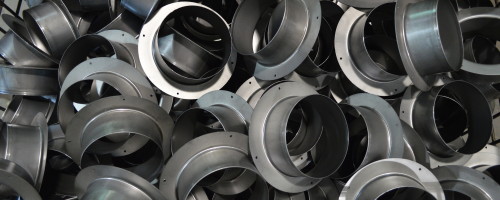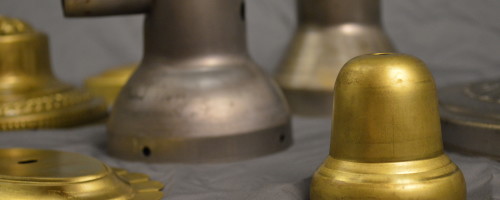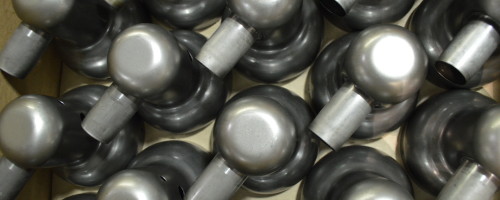Metal Drawing
Metal drawing is a metalworking process by which metal is stretched and formed using tensile force. The process is typically performed cold, which is done to ensure accurate tolerances, better grain structure and surface finish, as well as improved material properties. There are two main types of drawing: sheet metal (also known as deep drawing) and wire, bar and tube drawing.
Sheet metal drawing generally involves the manipulation or deformation of plastic over a curved axis. Wire, bar, and tube drawing involves the starting stock being drawn through a die, which reduces its diameter, at the same time increasing the length. Plastic (or cold) drawing employs the same process, but instead is applied to plastics. The process is considered “deep” drawing when the part that is drawn has a greater depth than diameter.
Drawing Equipment
There are various types of drawing process that are performed in manufacturing. The two major types are sheet metal and bar, tube, and wire drawing. Most drawing processes are done at room temperature, but some may be performed at higher temperatures, depending on the specific needs of the project. Here’s some equipment that is usually used in metal drawing.
Common Tools
Drawbenches and drawing machines are most commonly used in the drawing process to reduce the size of sheet metal, bars, wire, and tubes by drawing through drawplates or dies. This equipment can be used to form ductile or malleable materials, such as steel, stainless steel, copper, and nickel.
Types
There are various types of drawbenches and draw machines to meet a wide range of application, though common types include hydraulic or dual chain. Hydraulic equipment can be used for many materials and work by using fluid power to pull the material to the die to be shaped. Dual chain equipment is largely used for bar, wire, and tubing, and is commonly used to improve the finish and strength of the material using internal dies.
Sheet Metal Drawing
Sheet metal drawing involves plastic deformation over a curved axis and the sheet metal is flowed and stretched using drawbenches or drawing machines. The material moves into the shape of the die as the die forms shapes from flat sheet metal. Bar, wire and tube drawbenches and drawing machines involve the process of drawing stock through dies mounted on the equipment in order to reduce the diameter of the material while increasing the length.
Deep Drawn Stamping
Stamping is a general term used to describe a range of alteration and forming processes within metal fabrication. These alterations are typically made by heavy presses during the drawing phase to create additional features or modifications on the finished product. The process combines the benefits of both metal stamping and spinning to create seamless parts.
Deep drawn parts are typically the most cost effective for large quantity orders. Though deep drawing is similar to metal stamping, they are distinct processes. Deep drawing is used to fabricate products and parts deeper than what metal stamping is capable of. The deep drawing process is among the most widely used in sheet forming. It is applied to a number of industries and just about any industry can benefit from the process, though it is largely used in the home appliance, as well as the automotive parts manufacturing industry.
Deep Drawing Process
Using the deep drawing process, sheet metal is gradually formed into a shape after completing various steps. Generally, the metal is formed into a three-dimensional shape through the process of die-forming the metal around a punch. Deep drawing is meant to produce both symmetrical and asymmetrical parts, dependent on the project, with precise and intricate features.
The deep drawing press step is always supplemented with another forming technique within the press. The possible forming techniques include:
- Beading
- Bottom piercing
- Bulging
- Coining
- Curling
- Extruding
- Ironing/wall thinning
- Marking
- Necking
- Notching
- Rib Forming
- Side Piercing
- Stamping
- Threading
- Trimming
Deep drawn stamping is a longstanding and trusted industry process, making it possible to create products in many different industries like aerospace, automotive, consumer packaged goods, manufacturing, small engine, power equipment, industrial machinery, and more. Charles Richter has been producing high quality metal components since 1911. We are committed to providing unique solutions for our customers, no matter their requirements.
Contact Us to Learn More About Our Deep Drawing Process!


